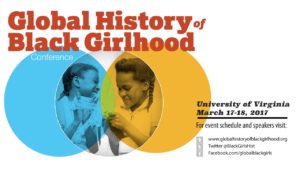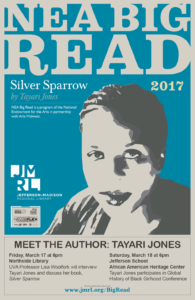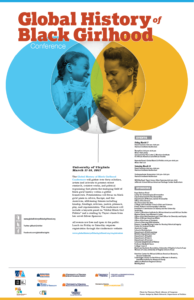Moving Black Girls to the Center of Women’s History Month
Written by Corinne Field, University of Virginia Assistant Professor of Women, Gender and Sexuality
In the past few years, black girls around the globe have proved their power as political activists, creative artists, and community builders. From #SayHerName and #BlackGirlMagic in the US to student protests in France and South Africa, black girls have led demands for social justice and freedom of expression. These efforts are not new, but part of a long tradition that historians, policy makers, and girls themselves are working to bring to the fore this Women’s History Month.
On March 17-18, UVA will host the Global History of Black Girlhood Conference where over fifty scholars, artists, activists, and girls from local schools will present their research and creative work focused on black girls’ pasts in the Americas, Africa, and Europe. This event arose from a collaboration between myself, LaKisha Simmons—a UVA alumna and Assistant Professor of History and Women’s Studies at the University of Michigan—and Abosede George—Associate Professor of History at Barnard College. Speakers at the conference will explore themes such as kinship, bondage, activism, justice, pleasure, play, and representation. They will ask what “black” and “girlhood” mean in different regional contexts, and how black girls experience race, gender, and age discrimination. A panel on “Global Black Girl Politics” will explore why some people become politically active early in life and what factors empower black girls as community leaders.
One of the most exciting aspects of this conference will be the involvement of young women and girls. Undergraduates at UVA, led by fourth-year Diana Wilson, will host an Undergraduate Symposium where students from multiple campuses will present original research and creative work. Abigail Kayser, a Ph.D. Student at the Curry School, will screen a film created by middle and high school students, Black Girlhood: Access and Assets. With help from Light House Studios, these girls filmed interviews with older black women and each other. Their film documents an intergenerational effort to resist negative stereotypes, gain access to opportunities, and empower young women to believe in themselves. A different group of high school students spent the winter term reading Tayari Jones’ novel Silver Sparrow under the guidance of Leah Wilson-Puryear, Director of Upward Bound. For the NEA funded Big Read event, these girls will interview Jones at the Jefferson School African American Heritage Center in an event moderated by Lisa Woolfork, Associate Professor of English. This project has enabled participants to draw connections between the fictional girlhoods created by Jones and their own experience coming of age.
By centering black girls’ stories in the celebration of Women’s History Month, this event aims to shift people’s understanding of who makes history. Historical sources by and about black girls are not easy to find. Archivists have too often focused on preserving the records of mature white men while disregarding materials produced by children, women and black people. Disadvantaged by age, gender, and race—and often poverty and illiteracy as well—black girls remain marginal in historical archives. But groundbreaking work by historians proves that we can recover and better understand their histories. The Global History of Black Girlhood Conference is a major effort to hear these stories, center black girls’ experiences, and acknowledge that Women’s History must consider those who are still girls.
The Schedule for the Global History of Black Girlhood Conference can be found at:
- Good and Safe – Youth Protection in the Region and Beyond!
- Bridging the Gap: Understanding Gender Dynamics in Substance Use Disorders Among College Students
- I Feel Like a Speck
- UVA Club of Richmond: UVA vs VCU Baseball Game at The Diamond & Tailgate
- Virginia Club of New York: Rich AF Book Club
- UVA Club of Seattle: April Hoos & Brews


